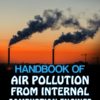All energy sources have some effect on our environment. Fossil fuels — coal, oil, and natural gas — do significantly more harm than renewable energy sources by most measures, as well as air and water pollution, damage to public health, wildlife and habitat loss, water use, land use, and global warming emissions. In the past, businesses have generally viewed water as a minimal operational cost and not a strategic issue. However, water has now emerged as a critical economic, environmental, and social issue for both corporations and the public sector in response to increased water demand, climatic risks and potentially negative impacts on brand value. Harnessing power from the wind is one of the cleanest and most sustainable ways to generate electricity as it produces no toxic pollution or global warming emissions. Wind is also abundant, inexhaustible, and affordable, which makes it a viable and large-scale alternative to fossil fuels. Despite its vast potential, there are a variety of environmental impacts associated with wind power generation that should be recognized and mitigated. The environmental impact of wind power when compared to the environmental impacts of fossil fuels is relatively minor. Compared with other low carbon power sources, wind turbines have some of the lowest global warming potential per unit of electrical energy generated. According to the IPCC, in assessments of the life-cycle global warming potential of energy sources, wind turbines have a median value of between 15 and 11 (gCO2eq/kWh) depending on whether off- or onshore turbines are being assessed. While wind turbine installations may cover a large area, they are compatible with many land uses such as farming and grazing, as only small areas of turbine foundations and infrastructure are made unavailable for use. Hydroelectric energy is the most widely used form of renewable energy, accounting for 16 percent of global electricity consumption. Meeting the growing demands for electricity creates difficult decisions for many countries. Hydropower is a mature technology, harnessing the energy moving from higher to lower elevations. It comes in various shapes and sizes from large reservoir projects to small run-of- river facilities. Hydropower is renewable, and has low greenhouse gas emissions. It is a premium energy source, providing a range of services. These include baseload and peak load generation, and support for other forms of electricity generation, particularly renewables. The context for decision-making is also changing, particularly in light of climate change imperatives encouraging a move away from greenhouse gas emitting energy sources.
This book ‘Wind and Water’ is primarily based on theoretical and applied results obtained by the authors during a long time of practice devoted to problems in the design and operation of a significant number of hydroelectric power plants in different countries. This work seeks to review the opportunities for hydropower development in selected countries/locations worldwide. It comprises all the main components of a hydro power plant, from the upstream end, with the basin for water intake, to the downstream end of the water flow outlet. Despite its vast potential, there are a variety of environmental impacts associated with wind power generation that should be recognized and mitigated.













